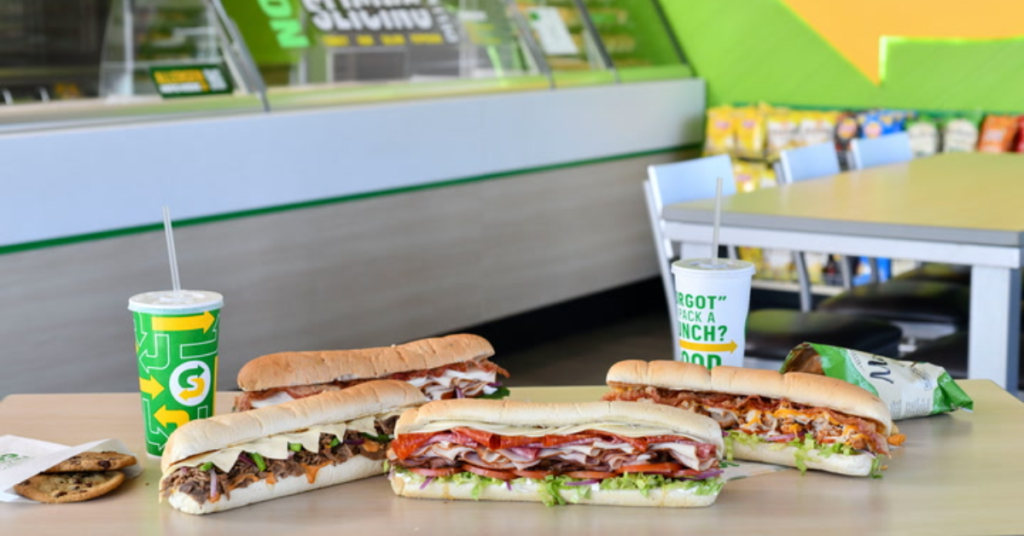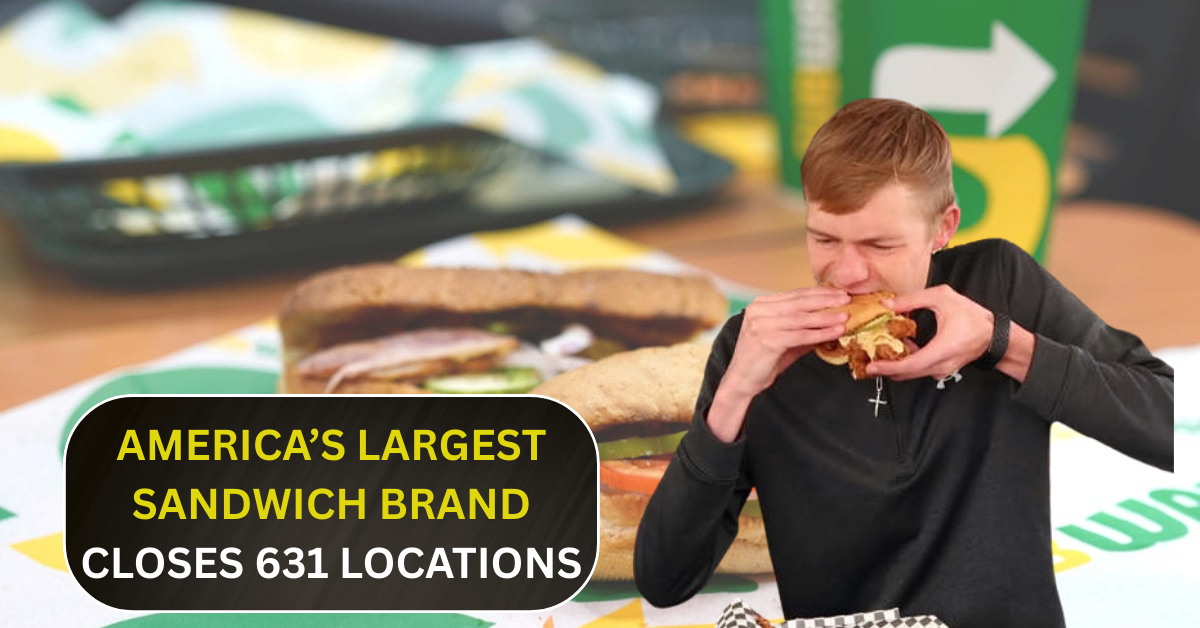Subway, the largest sandwich chain in the U.S., faced a significant setback, closing 631 of its underperforming locations across the country. This reduction dropped its total store count in the U.S. to 19,502, marking the first time in two decades that Subway’s store count has dipped below 20,000.
These closures are the latest in a series of challenges the company has faced, marking the eighth consecutive year of decline in the U.S. market. The closures highlight a broader trend affecting the fast-food industry, with changes in consumer preferences, rising competition, and the financial difficulties of individual franchisees all contributing factors.
A Shift in Consumer Preferences
One of the primary reasons behind Subway’s decline is the changing tastes and demands of consumers. In recent years, there has been a noticeable shift towards healthier, more sustainable eating habits. Fast food, once the go-to choice for convenience and affordability, is increasingly being overshadowed by health-conscious dining options.
With an increasing number of people opting for plant-based foods, organic options, and locally sourced ingredients, traditional fast food chains are feeling the pressure to keep up with these evolving preferences.
Subway, which once prided itself on offering a healthier alternative to other fast-food chains, has struggled to maintain this image in a rapidly changing market. While the brand has introduced healthier menu items in response to these trends, such as fresh vegetables and whole-grain bread, it hasn’t been enough to turn the tide. The rise of health-focused fast-casual restaurants and local eateries, which cater more directly to the demand for nutritious options, has left Subway facing stiff competition.
The Rise of Competitors
Subway is not the only fast-food chain feeling the pressure. The competition in the fast-food industry has grown significantly in recent years, and Subway is not immune to this. Major fast-food chains like McDonald’s, Taco Bell, and Wendy’s continue to innovate and expand, offering customers a wide variety of menu options, improved customer service, and competitive pricing. Meanwhile, a new wave of fast-casual restaurants, such as Chipotle, Panera Bread, and Shake Shack, have created a more premium dining experience that appeals to today’s consumer, who is looking for healthier options and better-quality ingredients.
Subway’s traditional business model, with its focus on quick, customizable sandwiches, is no longer enough to keep up with the growing competition. Customers now expect more from their dining experience, including faster service, higher-quality ingredients, and a broader range of choices. As a result, Subway has found itself struggling to stay relevant in a market that is constantly evolving.
The Financial Struggles of Franchisees
Another factor contributing to Subway’s store closures is the financial struggles faced by many of its franchisees. While Subway has one of the largest franchises in the world, it operates on a franchise model, meaning that individual store owners are responsible for the day-to-day operation and profitability of each location. Over the years, many Subway franchisees have faced significant financial challenges due to rising operational costs, low sales, and an inability to compete with newer, more popular chains.

Subway’s business model, which once allowed franchisees to thrive with relatively low start-up costs, has become less appealing in recent years. Many franchisees have struggled to cover increasing overhead costs, such as rent, utilities, and labor, especially in areas with high competition. As a result, some franchisees have been forced to close their doors, contributing to Subway’s ongoing decline.
The company’s support for its franchisees has also been called into question. Many store owners have voiced concerns about the lack of corporate support, including marketing assistance and operational guidance, leaving them to fend for themselves in an increasingly competitive market. This lack of support has led to frustration and, in many cases, store closures.
Subway’s Global Presence
Despite the challenges faced in the U.S. market, Subway remains the largest fast-food chain in the world in terms of the number of locations. With over 40,000 stores in more than 100 countries, the brand still holds a dominant position on the global stage. Its global reach and the ability to adapt to local tastes have helped it maintain a strong presence worldwide. In fact, Subway is the third-largest restaurant chain globally, following McDonald’s and Starbucks in terms of the number of locations.
Subway’s success in international markets can be attributed to its ability to tailor its menu to meet the tastes and preferences of different cultures. From the Mediterranean-inspired ingredients in European markets to the unique flavor profiles offered in Asian countries, Subway has successfully localized its offerings to appeal to a wide range of consumers. However, even with its global success, the brand has struggled to maintain the same level of growth and profitability in its home market, the U.S.
Adapting to New Market Demands
To remain competitive in an ever-changing market, Subway has been experimenting with various strategies to revitalize its brand. The company has invested in redesigning its stores to offer a more modern and appealing atmosphere. New store designs feature updated interiors, including digital ordering kiosks and improved seating areas, creating a more comfortable and enjoyable dining experience for customers.
Additionally, Subway has made efforts to improve its menu by offering more premium ingredients, such as avocado, organic produce, and higher-quality meats. The company has also introduced new sandwiches and sides to appeal to changing tastes, including plant-based options like the “Beyond Meatball” sub, catering to the growing demand for plant-based protein alternatives.
Subway has also embraced technology to improve customer convenience and engagement. The brand has launched a new mobile app that allows customers to order ahead, access special deals, and earn rewards. This digital transformation is part of a broader effort to meet the expectations of younger, tech-savvy consumers who prefer the convenience of mobile ordering.
Despite these efforts, it remains to be seen whether these changes will be enough to reverse the brand’s decline in the U.S. market. While the global market continues to show promise for Subway, the company faces an uphill battle to regain its former glory in the U.S.
Looking Ahead: Can Subway Bounce Back?
Subway’s future in the U.S. is uncertain, but the company is not giving up without a fight. The sandwich chain has vowed to continue adapting its menu, improving its customer experience, and rebranding itself to appeal to today’s consumer. However, with the growing competition and the challenges posed by changing market dynamics, it’s unclear whether these efforts will be enough to sustain Subway’s position as the largest fast-food chain in the U.S.
The closures of 631 stores may be a sign of the difficulties Subway faces, but they also represent the company’s efforts to streamline its operations and focus on its most profitable locations. By focusing on quality over quantity, Subway hopes to regain its footing in a challenging market. Whether these efforts will succeed remains to be seen, but one thing is certain: Subway will need to continue evolving to stay competitive in the fast-food industry.

Deepak Grover is a dedicated content writer at OTE News, specializing in government affairs, public policy, and current events. With a keen eye for detail and a passion for factual reporting, he ensures readers receive accurate and insightful news. Deepak holds a degree in Political Science and has experience in research-driven journalism.
When not writing, he enjoys reading historical books, exploring hiking trails, and staying updated with global political trends. His commitment to ethical journalism makes him a trusted voice at OTE News.




